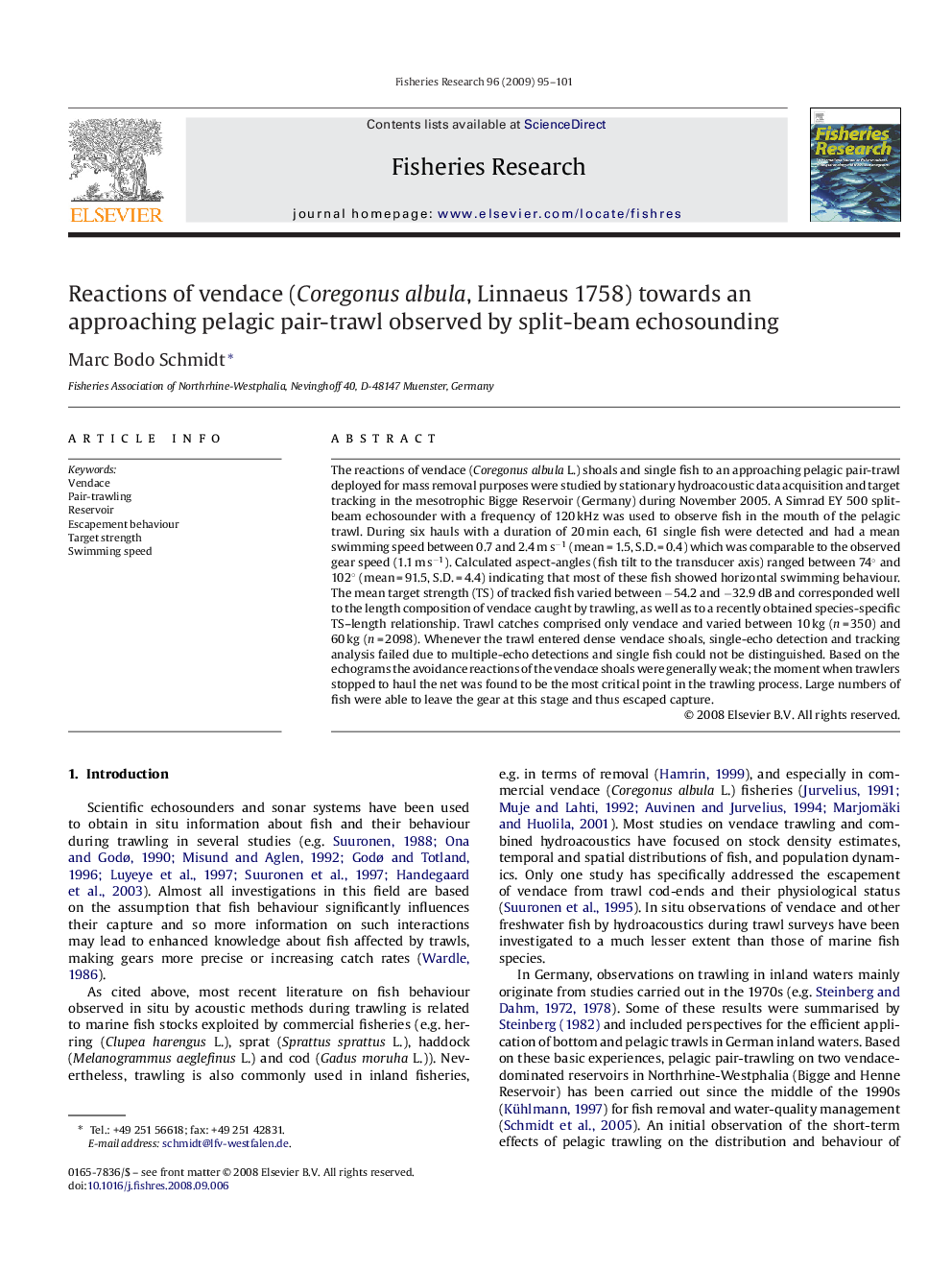| Article ID | Journal | Published Year | Pages | File Type |
|---|---|---|---|---|
| 4544401 | Fisheries Research | 2009 | 7 Pages |
The reactions of vendace (Coregonus albula L.) shoals and single fish to an approaching pelagic pair-trawl deployed for mass removal purposes were studied by stationary hydroacoustic data acquisition and target tracking in the mesotrophic Bigge Reservoir (Germany) during November 2005. A Simrad EY 500 split-beam echosounder with a frequency of 120 kHz was used to observe fish in the mouth of the pelagic trawl. During six hauls with a duration of 20 min each, 61 single fish were detected and had a mean swimming speed between 0.7 and 2.4 m s−1 (mean = 1.5, S.D. = 0.4) which was comparable to the observed gear speed (1.1 m s−1). Calculated aspect-angles (fish tilt to the transducer axis) ranged between 74° and 102° (mean = 91.5, S.D. = 4.4) indicating that most of these fish showed horizontal swimming behaviour. The mean target strength (TS) of tracked fish varied between −54.2 and −32.9 dB and corresponded well to the length composition of vendace caught by trawling, as well as to a recently obtained species-specific TS–length relationship. Trawl catches comprised only vendace and varied between 10 kg (n = 350) and 60 kg (n = 2098). Whenever the trawl entered dense vendace shoals, single-echo detection and tracking analysis failed due to multiple-echo detections and single fish could not be distinguished. Based on the echograms the avoidance reactions of the vendace shoals were generally weak; the moment when trawlers stopped to haul the net was found to be the most critical point in the trawling process. Large numbers of fish were able to leave the gear at this stage and thus escaped capture.
